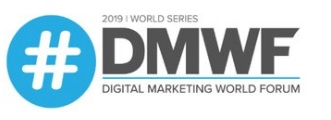
What do you think of when you hear the term ‘influencer’, or ‘influencer marketing’? The chances are that it’s someone who is either famous for being famous, or a bona fide famous person making a killing from some soulless shilling. Either way, you may wonder: just how are they getting the ROI from this?
At DMWF Global in London back in May, accounting software provider Sage made an interesting point. Could you name any big influencers in the accounting space? Assuming most people probably couldn’t, the company instead went down the route of employee advocacy for greater social engagement.
If you agree that a big influencer is not for your brand, other options are however on the table. Micro-influencer marketing is, as the name suggests, where brands will partner with individuals, usually with between 1,000 and 10,000 followers on social media, with a strong, genuine interest in their topic of choice as well as high engagement levels with regular content.
The problem however is that while everyone may have heard of an A-list film star or a sporting hero, getting the right micro-influencer can be a tough job.
 This is where SocialPubli comes in. The company offers a social marketing platform which puts advertisers in touch with influencers across a variety of social media touchpoints, from Facebook, Twitter and Instagram, to LinkedIn, YouTube and blogging. Campaign managers can control their operations through the dashboard, see results arriving in real-time and get detailed statistics about their campaigns.
This is where SocialPubli comes in. The company offers a social marketing platform which puts advertisers in touch with influencers across a variety of social media touchpoints, from Facebook, Twitter and Instagram, to LinkedIn, YouTube and blogging. Campaign managers can control their operations through the dashboard, see results arriving in real-time and get detailed statistics about their campaigns.
For Ismael El-Qudsi, CEO of SocialPubli (above, left), the rationale is evident. “Our mission is trying to diversify the influencer marketing – try to be diverse to everyone and make the campaigns more realistic,” El-Qudsi tells MarketingTech. “[If you have] 500 people uploading to pictures to Instagram, at the end, you get 500-1000 different messages talking about the brand. The brand supervises everything, and if they are not happy then they won’t pay for that.”
El-Qudsi spoke this month at DMWF North America around ‘the power of micro-influencers’. Under the hashtag of #WEAREALLINFLUENCERS – El-Qudsi notes his mother would be his ideal influencer for cooking – the SocialPubli CEO will explore how celebrity does not necessarily mean influencer. “Nobody believes that Rafael Nadal or Roger Federer drives a Kia or a Hyundai,” he explains. “It’s totally unrealistic.”
Once you’ve got your micro-influencers sorted, then the big question is on how to get ROI. Like many emerging marketing methods, it is often where things fall down. Writing for this publication last year Amir Jirbandey, head of inbound marketing at Pulsar, noted the importance of ROI in this scenario.
“The increased engagement rates achieved by working with micro-influencers means that there is often a much higher ROI,” Jirbandey wrote. “Traditional social influencers, or brand ambassadors will have a large network, but often they are not well connected. Engaging with a series of well placed micro-influencers, who connect multiple networks together, will result in a brand’s message influencing more relevant people.”
AEG is a good example of getting the balance right. The Spanish arm of the home appliances manufacturer was looking to raise awareness around Saborologia, a documentary around ‘tasteology’ showing users how to ‘take the flavour to another level’ in the kitchen. Psychology professors and purveyors of scientific gastronomy were targeted, and the result was a total reach of almost 8 million across Twitter and YouTube. The Twitter campaign generated more than 1000 clicks and almost 2000 retweets from just under 300 messages.
El-Qudsi admits the difficulties in terms of ROI – but there is a benefit. “It’s hard to measure the ROI of an influencer marketing campaign, especially a long campaign,” admits El-Qudsi. “The ROI is really difficult. [However] we are seeing that if you’re comparing that with your own SEM or SEO efforts, the conversation rates are almost twice as much when you do that SEM or SEO campaign.
“For us, influencer marketing is another piece of the marketing plan,” El-Qudsi adds. “It is not the [complete] solution, to be honest. I always say if they know you they’re going to value you, so that’s where influencer marketing plays a particular role at the beginning of the funnel.
“It’s more like a branding tool than a sales tool. [You can] use influencer marketing in almost every campaign, but do it inside a bigger plan. You can use it to complement with your SEO or email.”
It may not be the complete solution, but influencer marketing is an important part of the puzzle – and micro-influencing may be the way to go for it.
 Interested in hearing leading global brands discuss subjects like this in person?
Interested in hearing leading global brands discuss subjects like this in person?
Find out more about Digital Marketing World Forum (#DMWF) Europe, London, North America, and Singapore.






